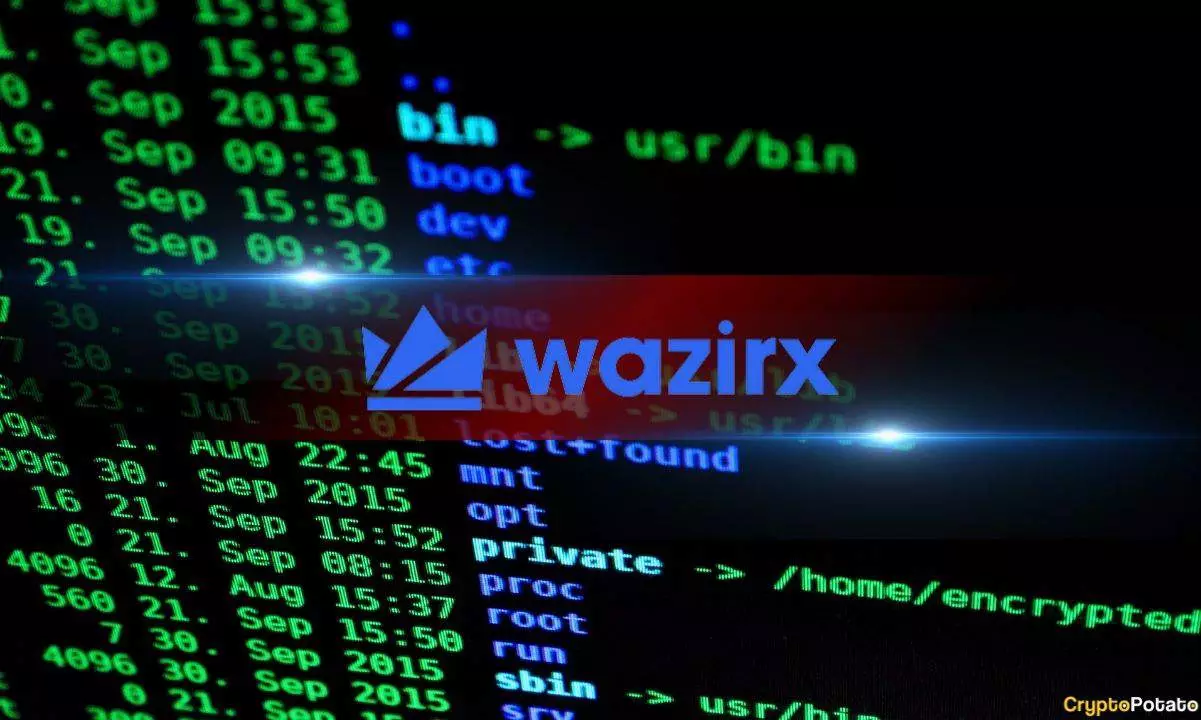The cryptocurrency landscape often resembles a high-stakes game of chess where players must be perpetually vigilant. In recent developments surrounding WazirX, a prominent Indian crypto exchange, the situation took a dramatic turn with allegations of significant fund transfers without user notification. This controversy traces back to a $235 million hack that occurred in July, resulting in WazirX’s interaction with legal authorities and a consequent four-month moratorium imposed by a Singapore court. Amidst these legal proceedings, WazirX disclosed over 240,000 wallet addresses, leading to discontent among users and triggering a flurry of speculation.
The heart of this matter lies in assertions made by Ashish Singhal, the CEO of CoinSwitch, a competing crypto platform that manages Indian rupees and virtual digital assets with WazirX. Singhal claimed that his team, analyzing the data released by WazirX, discovered the transfer of approximately $75 million worth of crypto assets to two prominent exchanges, Bybit and KuCoin. These revelations raised alarm bells among users and stakeholders, who felt blindsided by what they perceived as a lack of transparency from WazirX. While Singhal withheld further details citing ongoing legal disputes, the initial claims sparked a gargantuan debate on the integrity and accountability of crypto exchanges.
In the wake of these accusations, WazirX’s founder Nischal Shetty took to social media to address the concerns swirling around his company. He characterized the narrative put forth by Singhal as “false” and part of a “coordinated campaign” aimed at undermining WazirX’s credibility. Shetty assured users that the fund transfers were not clandestine maneuvers, but rather a necessary part of transitioning to a new custodian in the aftermath of the hack. He argued that regulatory compliance and the intricacies of digital asset custodianship necessitated temporary measures, such as moving assets to exchanges that could provide suitable custodial services.
As cryptocurrency custody grows increasingly complex, exchanges like WazirX and others face inherent challenges regarding asset management. Different custodians support various tokens, which complicates the management of assets following a security breach. Shetty suggested that finding suitable custody solutions was a painstaking process, thus necessitating the aforementioned transfers. This explanation introduces the concept of custodianship as a critical factor in understanding the dynamics at play during the fallout from the hack.
Despite the assurances from WazirX regarding the transfers, the aftermath of the hack poses considerable challenges. Despite extensive efforts, including a $23 million bounty and engaging forensic experts and law enforcement, the exchange still has not recovered any of the stolen funds, with the perpetrator reportedly linked to North Korean money laundering activities. This sobering reality casts a long shadow over WazirX’s operations and highlights the risks associated with crypto exchanges.
The fallout from this incident raises significant questions about user trust and the operational transparency of cryptocurrency exchanges. Users, who trust platforms with their financial assets, are rightfully concerned when they perceive a breach of that trust, especially regarding sizable fund movements without notification. This lack of communication from WazirX could lead to wider implications for user engagement, regulatory scrutiny, and the reputation of the cryptocurrency sector in India and beyond.
The WazirX saga emphasizes the necessity for clarity and transparency in the cryptocurrency space. As the industry encounters volatile challenges, exchanges must navigate the fine line between operational secrecy and user trust. The road ahead for WazirX will involve addressing user concerns comprehensively and rebuilding a reputation that stands resilient even against the harshest criticisms. Moving forward, understanding the rules of custodianship and enforcing regulations may help bolster confidence among users, investors, and the broader cryptocurrency ecosystem.















